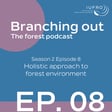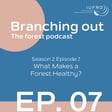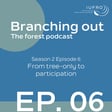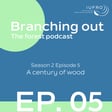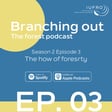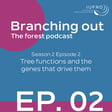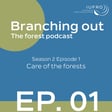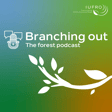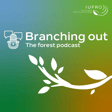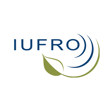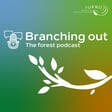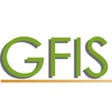Become a Creator today!Start creating today - Share your story with the world!
Start for free
00:00:00
00:00:01

Episode 4: Modelling the Future of Forests
How can we manage forests for a future we can’t fully predict? In this episode of Branching Out: The Forest Podcast, we dive into the work of IUFRO Division 4—Forest Assessment, Modelling and Management. Co-coordinators Dr. Bianca Eskelson and Dr. Don Hodges share how data, simulation tools, and emerging technologies like AI are helping forest scientists and decision-makers explore alternative futures. From wildfire risk to green jobs, we explore the science behind forest planning in an uncertain world—and why local knowledge and collaboration remain essential. If you're curious about the future of forest science, this episode is for you.
Presented by Jose Bolaños (IUFRO HQ) and Nele Römer (IFSA).
Transcript
Introduction to Branching Out Podcast
00:00:02
Speaker
not just looking at big data of what we see now, it's understanding of why do we see the things that we see now and what does that mean in the future under different climate realities because we don't have big data of the future yet.
00:00:26
Speaker
Hello everyone, I'm your host Jose Bolaños from the International and Union of Forest Research Organizations at EUFRO, the global network for forest science cooperation, and you're listening to season two of Branching Out, the forest podcast.
Introduction of Co-host and Guests
00:00:38
Speaker
It's great to have you with us as we explore more forest science. So far this season, we have covered EUFROUS Division 1, 2 and 3. And today we have the co-coordinators of Division 4, Forest Assessment, Modeling and Management.
00:00:52
Speaker
And here is my co-host, Nelly Roma, from the International Forestry Students Association, IFSA. Come on, Nelly, introduce yourself. Hello everyone, this is Nele Rimmer from the International Forestry Students Association, IFSA, the Global Students Network, where I'm member since six years now. I'm currently in my Master's in Berlin in biodiversity and conducting a research project in the European Forest Institute. Welcome, Nele. Here with us is Bianca and Don.
00:01:19
Speaker
So maybe you could introduce yourself and maybe share a story where you felt the real world, the human impact of what this division does. Go ahead.
Bianca Eskelson's Background in Forestry
00:01:27
Speaker
Hi, my name is Bianca Eskelson. I'm currently an associate professor in forest biometrics at the University of British Columbia in Canada. And I grew up in Germany and ended up ah getting a forestry degree at the University of Göttingen. After that, I had the opportunity to go to Oregon State. University to get my PhD in forest biometrics and my PhD supervisor, Tim Meskin, got me involved in IUFRA in 2010. One of my fellow working party deputies back then was Dr. Teresa Fonseca, who is now a co-coordinator from Division 1. And we ended up organizing sessions for IUFRO Congresses in 2014 and 2017.
00:02:06
Speaker
And for both events, we shared hotel rooms, which was very nice because it helped cut travel costs back then. In summary, IUFRO for me stands for forestry friendships, and I'm excited to be part of the organization.
00:02:20
Speaker
And probably you develop a very good friendship because it's not easy to share a room. Don, go ahead.
Don Hodges' Forestry Journey
00:02:26
Speaker
Hello, I'm Don Hodges. I am the director of the School of Natural Resources at the University of Tennessee in the U.S. I actually grew up in the town where I am currently working. I did my undergraduate degree in forestry at the University of Tennessee, graduate work at the University of Georgia, and then had several faculty positions, mostly in the the eastern and southeastern U.S.
00:02:52
Speaker
And I started youth row a little bit earlier than and Bianca. My first connection actually was the 1986 World Congress in Ljubljana. Again, like Bianca, my major professor, Fred Cubbage, is the one who got me involved.
00:03:07
Speaker
And I've been involved in various groups, divisions ever since. I really got heavily involved in the 2000s, in the early 2000s with 4.05.00, which is managerial economics in the county.
00:03:22
Speaker
And I've never shared a room, I will admit, in a UFRO conference. But like Bianca, to me, really the value are the friendships. It's enhanced my career quite a bit through research projects and publications that through people I have met through a youth row.
00:03:41
Speaker
But I have to say, really, it's the friendships I have developed that have given me a much better understanding globally of not only forestry, but just society
Division 4 Overview: Forest Assessment and Management
00:03:51
Speaker
in general. So it's it's been a wonderful organization for
00:03:57
Speaker
Yes, that's so true. That's the same will forestry network. It's always fun to make friends. And maybe to really start things off, could you tell a little about Division 4? What's its main field of work and how does it fit into the broader IUFRO network? work Division 4 is forest assessment, modeling and management.
00:04:13
Speaker
And it includes a wide range of quantitative topics related to forest management and forest ecology. Areas include study of growth and yield, remote sensing for inventory of forest resources,
00:04:26
Speaker
Decision Support Tools, Forest Management Planning, and Managerial Economics. Consists of five research groups, and I'll just list them here. 4.01 is Forest Mentoration and Modeling.
00:04:40
Speaker
4.02 is Forest Resources Inventory and Monitoring. 4.03 Landscape Analysis and Decision Support. 4.04 is Forest Management Planning.
00:04:51
Speaker
And 4.05 is Managerial Economics in the County. And I think what's really important is that Division 4 encourages interdisciplinary work between foresters, ecologists, biometricians, modelers, programmers, economists, remote sensing researchers, and many others.
Collaborative Efforts in Forestry
00:05:08
Speaker
And in terms of your question, how it fits into the broader IUFRO network, I think because we have such interdisciplinary work and we focus on a wide range of quantitative methods to shed light on how trees grow and in to interact with the environment, we really fit in with all other divisions.
00:05:26
Speaker
One of the natural links, I think, is Division I, silviculture, terms of growth and yield and how trees go and stand dynamics happen, but also some of us look at disturbances via wildfire or insects.
00:05:42
Speaker
and And so there are lots of linkages. Division 4 really brings the quantitative pieces to many of the other parts. Sounds really, really interesting. And I guess the division work, as you mentioned, works in areas where there is a lot of data collection and sounds like lots of information and probably lots of computing behind
Impact of Big Data and Remote Sensing
00:06:02
Speaker
it.
00:06:02
Speaker
Am I allowed to say big data here? Could you share an example of how these tools help us to better understand forests, how we manage forests, how we address global challenges? In order to answer your question, we had reached out to some of the Division IV research group coordinators and deputies, and maybe Dawn could start.
00:06:22
Speaker
Well, one example is Dr. Pete Bettinger from Research Group 4.04, the Forest Management and Planning, has emphasized how big data help us improve our forest management plans.
00:06:33
Speaker
He stated, by utilizing increasingly precise and accurate information regarding a forest system, we are able to develop more efficient and more relevant forest plans through optimization and simulation.
00:06:45
Speaker
As computer systems have evolved, we're able to manage and use big data in ways that we could not even just a few years ago. These enhancements to the manner in which we can model real-world systems may provide stakeholders with more confidence that alternative futures can be adequately assessed prior to selecting forest plans.
00:07:04
Speaker
So really, i mean, the computing power has enhanced our ability to more accurately model the real world. And it's, again, a lot of this is on the forest management side, but we're also seeing opportunities within wood processing industry using data science and machine learning. And just to add on Dr. Battinger's comments about alternative futures, it raises the need for to look at uncertainties and model predictions.
00:07:31
Speaker
And Dr. Annika Kangas from Finland, who works in research group 403, Landscape Analysis and Decision Support, mostly deals with uncertainty. And she highlighted that remote sensing has enabled us to produce very detailed maps of various forest characteristics over the last decades.
00:07:48
Speaker
We can use remote sensing time series to observe human and natural disturbance effects on forested landscapes and look at maps through time, which I always find really impressive when you look at these pixels changing over time after a forest disturbance. Yet, Dr. Kiyangas said that we should remember that some of these beautiful looking maps may be completely misleading and that our role as researchers is to make users understand that remote sensing based maps conflict with each other and may even conflict with what's actually observed on the ground in the field and that none of them are incorrect or correct and that it is our responsibility to understand the uncertainty
00:08:26
Speaker
of the predictions that our tools provide. And so this brings me back to one of the really common statistics quotes that you often hear that is attributed to the British statistician George Box.
00:08:37
Speaker
All models are wrong, but some are useful. And I think that this quote is always good to acknowledge that statistical models can never fully capture the complexities of the real world, but that they may still provide valuable insights if the model results are used and applied thoughtfully. And I think that in a nutshell really brings back what IU4Division4 is all about because we're all about models and quantitative methods and that we do need to remember how to use the results thoughtfully to make management decisions.
Climate Change and Forest Dynamics
00:09:09
Speaker
really brings me back to what we were discussing on last episode about the fact that all this computing, all these results are really just there to support the decisions. But then, you know, there's a human factor which is still important to take the final decision.
00:09:24
Speaker
And also, you know, what you were saying about the fact that The models are there to also kind of predict things, but not necessarily everything will go that way. And also the local knowledge, because this is also that René last time brought in, you know, that you can have a plan and you can plan most of the things, but then when you get into the field, there may be some things that you didn't plan for and you have to act on it.
00:09:46
Speaker
Along those lines, we actually have another working group, it's 4.0407, which is risk analysis. And they are basically, risk analysis can be applied to a lot of things in natural resources, invasive pests, natural disturbances, forest management planning, biodiversity.
00:10:05
Speaker
And this working group really is trying to develop simulation models, develop knowledge-based systems to try that to model that risk that's involved in forest management planning and decision-making.
00:10:20
Speaker
Yeah, that sounds like the same experience I also had. That's quite interesting. I think we're all struggling kind of with the same issues. For example, here at EFI, I'm working with 100,000 individual tree records for the Integrate Network. And there's a lot of data cleaning and it took a long while to get through the data, what can tell us and what's maybe not be able to tell us. So um there's really a lot of perspectives to take in and in the end decide what's actually important and is interesting for analysis.
00:10:48
Speaker
But yeah, from your division's perspective, what are the most pressing issues that researchers are facing today? Are there any challenges that keep coming up across regions? Well, climate change is the elephant in the room here, right? So I think that all forested areas around the world face changes in climate and thus changes in forest stand dynamics that we do need to understand. And as an example, I grew up in Central Europe and moved to the west coast of North America in 2004.
00:11:17
Speaker
2007, first visited British Columbia, where I live now, and I saw hectares and hectares of mountain pine beetle killed lodgepole pine stands, and I had never seen anything comparable. So then i moved up here to British Columbia in 2014, and since then I've been involved in modeling and quantifying post-wildfire dynamics.
00:11:35
Speaker
And with COVID and travel restriction, I hadn't been to Germany in quite a long time. And when I went back in 2022, I was shocked to see all the dead spruce trees along the highways and the clear cuts that had been put in to prevent ah further bark beetle spreads.
00:11:53
Speaker
And so it was... Summer are heat domes and droughts, trees are more vulnerable for insects, attacks, and disease. And then once dead trees stand around, they make great fuel for wildfires.
00:12:04
Speaker
And so I think one of the big challenges for us is to better understand disturbance interactions. So it's not just the single disturbance, but it's disturbance interactions in the Division IV context to get a handle on how to model these interactions. And I was quite excited to attend Dr. Joan Dutney's IU for webinars. presentation in February on using causal inference to disentangle forest disturbance interactions under climate change. She's a global change ecologist at UC Santa Barbara in California, and it was great to hear her talk about climate change, how climate change can dampen.
00:12:39
Speaker
amplify disturbance interactions. And from her presentation, it was pretty clear that this is something that every forest ecosystem worldwide faces. So there is an opportunity for us to think about how we can use existing data sets of permanent sample plots and tree ring databases and remote sensing to understand what happened in response to disturbance effects at different spatial scales and time scales.
Challenges in Forest-Based Value Chains
00:13:07
Speaker
This is a little bit different tact in the sense that 405, as I mentioned, is managerial economics and accounting. And one of the issues that that group has been struggling with, and actually it's it's a global problem, is just looking at forest-based value chains.
00:13:24
Speaker
And they're really focusing particularly on the challenges in forest employment. And we are seeing globally, i mean, employment obviously is essential to a well-functioning value chain.
00:13:36
Speaker
And so they're really starting to look at how we can address those issues. And this includes everything from green jobs, informal economies, workers' rights.
00:13:47
Speaker
And so what they're trying to do is ah just examine the functioning of existing value chains, innovative products, and linkages between economic and social well-beings. We're seeing this really value change and just forest employment become an issue globally due to a variety of issues, including climate change, including ah societal values. And has there been any recent discovery that you're particularly excited about?
Advancements in LiDAR Technology
00:14:15
Speaker
Yeah, I was going to go back to something Dr. Annika Kanga said, um emailed me when I reached out with some of these questions. And Dr. Kanga said maybe the biggest thing for her in recent years has been the ability of LIDAR data to depict the tree crowns in a way that would never be possible with field data.
00:14:35
Speaker
With LIDAR, we can detect and measure the branches, the growth of branches, or even the movement of branches when the water level changes diurnally. trees look like they go to sleep during the night when the branches drop.
00:14:49
Speaker
So I thought that was really cool. And it is a good reminder what LIDAR has really given us over the last decades in terms of looking at structure, specifically crown structure, and sort of to link this to some of the work I do.
00:15:05
Speaker
I'm involved in the analysis of a spruce pine trial in interior British Columbia where they've planted different density levels at different mixture levels of spruce pine. And so as we do traditionally in these kinds of trials, we measure tree diameters, we measure tree heights, and then we have some really basic crown metrics such as crown width and all cardinal directions, height to crown base, and damage some damage information on crowns. And so my colleague Ignacio Barbato published a paper
00:15:38
Speaker
on this data set and looked at crown ratio and crown projection area. But with LiDAR data, you can look at the crowns and how they develop in these different densities and decent mixtures in more detail and get a way better understanding about wood quality than you could ever get with these ground-based measures. So LiDAR, i think...
00:15:58
Speaker
is, as Dr. Kanga said, one of the big developments. I mean, not that recent anymore, but still cool to look at. I know it's a laser-based solution, but maybe you can explain it better. So, right, you said it's laser-based, and so the LiDAR pulses get sent out, and whenever they hit something, the returns get recorded. And so you get these point clouds, and based on the point clouds, you can see where there's branches,
00:16:25
Speaker
and understory and tree trunks. Working from inventory plots to something that comes from data, something that comes from some other sources, how does does that work with combining it?
00:16:37
Speaker
Well, you need good GPS coordinates. So you have your plot measurements and you know where they were recorded and then you map out the stems and you have locations for them. And then you can link that with the LIDAR measurements for which you have GPS coordinates.
00:16:55
Speaker
And then as you create those linkages and LIDAR is really good with tree heights, right? So you can then calibrate essentially your LIDAR data with the ground plots that you have. And then you can scale that up across the landscape and use your LIDAR clouds at the landscape level and get what you have there in terms of tree heights, etc., based on what you found on your subsample of ground
Integrating Data for Forest Modeling
00:17:22
Speaker
plots.
00:17:22
Speaker
I think one of the big things is that we need to do a better job about not working in our silos. And so you look at somebody like me who comes from an inventory measurement background, working with inventory permanent sample plot data,
00:17:38
Speaker
Then there are folks who work with tree ring data and they've got this incredible wealth of information that they've accumulated over the last decades also, but we don't talk.
00:17:49
Speaker
I do not think that we have so far efficiently linked all the different available data sources that we have. And there are many active and passive sensors that provide remotely sensitive images in unprecedented detail. And if we went about and linked ground-based tree growth measurements to these remote sensing data sources and climate data, we will be able to upscale growth information more efficiently.
00:18:16
Speaker
And so since the last IUFRO Congress in the summer 2024, we have a new working party in Research Group 401, that is led by Dr. Sonja Vospernik from Bocke University in Vienna, and it's called Tree Growth, Mortality and Remote Sensing. And the group focuses on remote sensing based forest growth modeling.
00:18:36
Speaker
And they're planning to start a webinar series in May on that specific topic. I think that working party will work more closely with inventory data, but again, looking at tree growth, tree ring data, and linking tree ring data with inventory data, remote sensing, and climate data has lots of opportunities.
00:18:57
Speaker
They're talking about hosting a virtual workshop this fall and dedicated training courses with regards to oh tree growth, mortality, and remote sensing. Thank you, that's super insightful. And I myself remember from my past job that I worked with handheld laser scanners and it's a lot of data. It needs a lot of calibration.
00:19:17
Speaker
Handling of those big data is actually super work
AI and Deep Learning in Forestry
00:19:20
Speaker
extensive. But anyways, looking ahead, what are the next big priorities for Division 4? Are there any emerging tools, technologies or collaborations that you think will transform the field in the coming years?
00:19:31
Speaker
I think the big buzzwords right now are probably artificial intelligence and deep learning. And again, in the U.S., and I think this is true globally, everybody, every university at least, seems to be developing their own data science programs, artificial intelligence, whatever it may be. And it's a lot of the work is in machine learning and computer science research.
00:19:54
Speaker
But we're starting to see a lot of spillovers into forest modeling. And again, it was just announced that one of the 2025-2029 task forces is AI for forest science.
00:20:08
Speaker
It's been approved and it was initiated by Liang Fu, who is the deputy coordinator of unit 4.02 and Zayoti Zhao, who's deputy coordinator of 4.01 point l three But they're collaborating. It's not just Division 4. It's certainly Divisions 1 and 9, but I'm sure there are others that are involved. And they are going to be driving AI innovation in forestry, focusing on multimodal big data, intelligent sensing, embodied AI models, and cognitive decision-making.
00:20:41
Speaker
By integrating remote sensing analysis, autonomous machine vision, reinforcement learning, and causal-driven decision-making, the task force's is trying to enhance forest monitoring, disaster prediction, genetic breeding, and intelligent forest management.
00:20:58
Speaker
And again, this to me is is one of the the big drivers going forward is just we've been talking a lot about big data and trying to combine different data sets to answer questions. A lot of this gets into ai and machine learning. Linking with AI and deep learning, the concept of causal inference and causal statistics are important to remember.
00:21:23
Speaker
And that those are things that we need to look at and address in forestry as well. So it's not just about looking at big data and machine learning and just finding things based on data. We would like to understand what are the actual causes.
00:21:39
Speaker
And so that is always my cautionary tale of machine learning techniques in terms of What are they really giving us and how can we get at the causes, the underlying causes of the things that we see? And so one of my PhD students works on climate sensitive growth and yield model development right now with an emphasis on using causal approaches that allow growth projections under climate change, right? Because it's not just looking at big data of what we see now.
00:22:07
Speaker
It's understanding of why do we see the things that we see now and what does that mean in the future under different climate realities because we don't have big data of the future yet.
00:22:20
Speaker
So in order to really understand and project what's going to happen moving forward... we need to understand the causes and not just sort of facts that the data spit out.
00:22:32
Speaker
And then maybe another thing that may be of interest in terms of what's coming up for Division 4 is we are planning a Division 4-wide meeting that Dr.
Upcoming Meetings and Future Outlook
00:22:43
Speaker
Bogdan Strimbo from Oregon State University is organizing in Turkey. And so that will either happen in 2026 or And you should...
00:22:52
Speaker
keep your eyes open for announcements on that. So Nele, any last thoughts before we go? would just like to thank you for that kind of format on having a dialogue together. And I find it really important to have that on, for example, data analysis, speaking between professionals and students, because That's opportunities we don't get quite often.
00:23:12
Speaker
And having those insights from IUFRA, especially Division 4, it's super insightful and fun to hear because when you have a chance to to just chat around. So thank you a lot. And it means a lot of also for IFSA to having that global network in exchange with big institutions like IUFRA.
00:23:30
Speaker
Well, and I hope that everybody listening has learned more about the Forest Assessment, Modeling, and Management Division. And with that, I'd like to thank our guests here today, to my co-host, Nelle. Great job.
00:23:44
Speaker
And thank you, Bianca and Don. And I'd like to thank our listeners. Look out for our next Branching Out episode, where we will explore the fifth division of IUFRO. And if you want to know more about IUFRO, follow us on social media or click on the link in the show notes.
00:23:58
Speaker
Goodbye.

